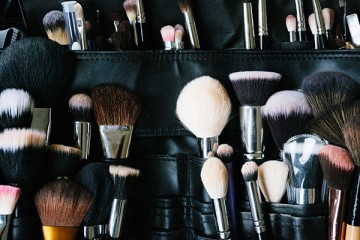9 Tips To Protect Your Skin From The Sun
1. Apply sunscreen
Sunscreen is a vital component of your sun protection routine. Pick a sunscreen with a sun protection factor (SPF) of 30 or greater. Make sure you generously apply sunscreen to all areas of your skin that are exposed to the sun, such as your face, neck, ears, and hands.
Start by applying a sufficient amount to cover all exposed areas, ensuring even distribution. Don't forget commonly overlooked areas, like the back of the neck, ears, and tops of the feet. For the face, use a nickel-sized amount of sunscreen and gently massage it into the skin.
Reapply sunscreen every two hours, or more often if you are swimming or perspiring a lot. Even water-resistant sunscreens can wear off over time or with towel drying, so reapplication is crucial for continuous protection. Pay attention to the expiration date of your sunscreen and discard any expired products, as they may be less effective.
Use sunscreen as part of your daily routine, even on cloudy or cooler days. UV rays can penetrate through clouds and still cause skin damage. Applying sunscreen regularly and consistently is an excellent first line of defense against the sun's harmful rays.
2. Seek shade
Limiting your sun exposure during peak hours, when the sun's rays are most intense, can significantly reduce the risk of sunburn and skin damage. Typically, these peak hours occur between 10 a.m. and 4 p.m., but they can vary depending on your geographical location and the time of year.
When spending time outdoors, make a conscious effort to stay in the shade as much as possible. Seek shelter under umbrellas, trees, awnings, or any other protective structures that provide shade. This helps minimize direct exposure to the sun's rays and reduces the risk of overexposure.
While shade can provide a considerable amount of protection, note that some UV radiation can still reach you indirectly, especially if you are near reflective surfaces, like sand, water, or snow. Therefore, combine seeking shade with other sun protection measures, such as protective clothing.

3. Wear protective clothing
Wearing protective clothing provides an additional physical barrier between your skin and the sun's rays. Opt for loose-fitting garments that cover as much skin as possible. Lightweight and breathable fabrics, such as cotton or linen are ideal, as they help keep you cool while offering protection.
3.1. UPF clothing
Consider purchasing clothing with a built-in ultraviolet protection factor (UPF). UPF clothing is specially designed to block harmful UV rays and provide enhanced sun protection. Look for clothing labels indicating the UPF rating, with higher ratings indicating better protection.
3.2. Wide-brimmed hat
Choose hats with brims that are at least three inches wide to effectively shade your skin from the sun. Hats made from tightly woven fabrics offer the best sun protection.
3.3. Sunglasses
Don't forget to shield your eyes and the delicate skin around them from the sun's rays. Look for sunglasses that provide 100% UV protection. Wraparound styles or those with larger lenses offer additional coverage and help protect the skin around your eyes.
4. Use a lip balm with SPF
The delicate skin of your lips is prone to sun damage, so provide them with adequate protection. Look for a lip balm or lipstick that contains SPF and offers broad-spectrum protection against both UVA and UVB rays to prevent sunburn, chapping, and the potential development of skin cancers on the lips.
Opt for products with a minimum SPF of 15 or higher for optimal protection. Ensure that the lip balm is applied generously and reapplied throughout the day, especially after eating, drinking, or wiping your lips.
5. Be mindful of reflective surfaces
Sand, water, snow, and concrete are examples of surfaces that can reflect and intensify the sun's rays, increasing your exposure to harmful UV radiation. This means that even if you are in the shade or wearing protective clothing, you can still be at risk of sunburn and skin damage.
Sand, for instance, can reflect up to 15% of UV radiation, while water can reflect up to 10%. Snow is particularly reflective, bouncing back as much as 80% of UV radiation. Even concrete surfaces can reflect a significant amount of UV rays, especially in urban environments with tall buildings and paved streets.
6. Stay hydrated
When you spend time under the sun, your body can lose fluids through sweat, leading to dehydration. Dehydration not only affects your overall well-being but also has a direct impact on your skin health.
Proper hydration plays a vital role in maintaining the elasticity and suppleness of your skin. When your body is well-hydrated, your skin appears more plump, radiant, and less prone to dryness and irritation. On the other hand, dehydration can cause your skin to feel tight, and dry, and even exacerbate existing skin conditions, like eczema or psoriasis.
7. Avoid tanning beds and sunlamps
Tanning beds and sunlamps may seem like a convenient way to achieve a tan, but they emit harmful UV radiation that can significantly increase the risk of skin damage and skin cancer. It is best to avoid these artificial sources of UV radiation altogether and opt for safer alternatives to achieve a sun-kissed glow, such as self-tanning lotions or sprays.

8. Check medications
Some medications can increase sensitivity to the sun, leading to a higher risk of sunburn. Consult your healthcare provider or pharmacist to understand if any medications you're taking have this effect and take necessary precautions.
Be aware that certain medications can make your skin more sensitive to the sun. This heightened sensitivity can increase the risk of sunburn even with minimal sun exposure. Common medications, like certain antibiotics, anti-inflammatories, diuretics, and some acne treatments, can have this effect.
To protect your skin, consult your healthcare provider or pharmacist to determine if any medications you are taking may increase your sun sensitivity.
9. Practice year-round protection
Sun damage can occur year-round since UV rays have the ability to penetrate clouds and are present even on cloudy or cooler days. Therefore, make sun protection a consistent habit regardless of the weather or season. Incorporate sunscreen, protective clothing, and other sun protection measures into your daily routine to ensure year-round safeguarding of your skin.
In conclusion,
Prioritizing sun protection is crucial for maintaining the health and well-being of your skin. By implementing these 9 tips to protect your skin from the sun, you can significantly reduce the risk of sunburn, premature aging, and skin cancer. Remember to consistently apply sunscreen, seek shade, and wear protective clothing, sunglasses, and lip balm with SPF. Stay mindful of reflective surfaces, stay hydrated, and avoid tanning beds and sunlamps. By taking these proactive steps, you can enjoy the outdoors safely while keeping your skin healthy and radiant for years to come.
- Related post: 9 Effective Tips for Skin Whitening at Home






